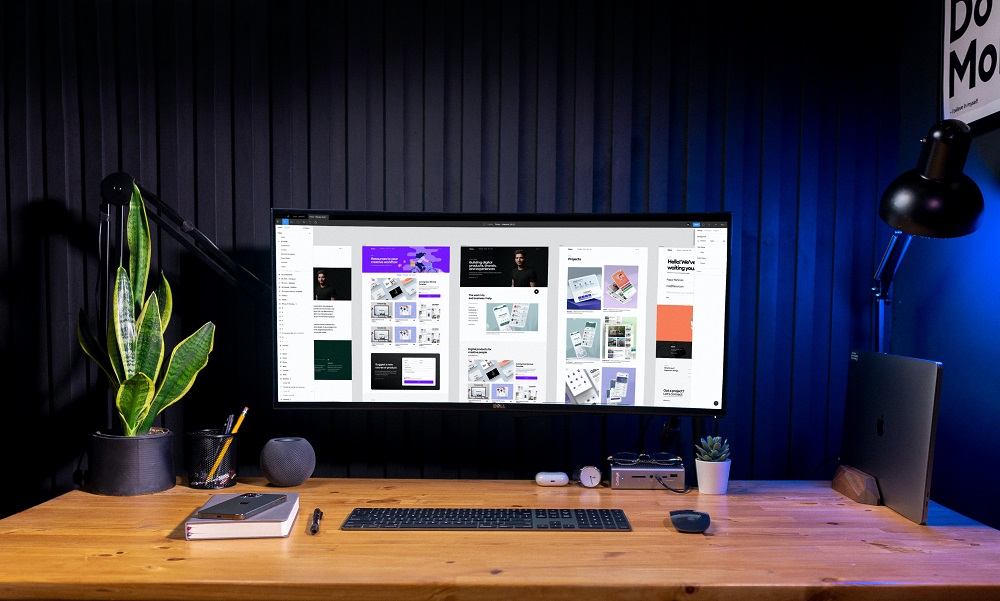Making a career transition is never easy, especially when you’re switching fields that, at first glance, seem similar. I’ve been there – moving from graphic design to user experience (UX) design was a significant shift, but one that has been incredibly rewarding. In this article, I want to share my journey and insights on navigating the transition from graphic design to UX design.
Embracing the UX Mindset
The first step in your transition journey is to embrace the UX mindset. While graphic design focuses on creating visually appealing and aesthetically pleasing designs, UX design revolves around crafting experiences that are not only visually appealing but also functional and user-friendly.
As a graphic designer, you already have a strong foundation in design principles, color theory, typography, and layout. These skills are valuable in UX design, but you need to expand your horizons. Start by understanding the importance of user-centered design. UX design places the user at the center of the design process, and empathy becomes a driving force behind every decision.
Building on Your Design Foundation
Your graphic design skills will serve as a solid foundation for your transition. The ability to create visually engaging layouts, choose appealing color palettes, and use typography effectively will be valuable assets in UX design.
However, UX design introduces new challenges and concepts, such as information architecture, usability testing, and user research. To bridge the gap, consider taking courses or online tutorials to acquire these additional skills. Invest time in understanding the principles of interaction design, as it forms the core of UX design. Learn about user flows, wireframing, and prototyping.
Mastering User Research
User research is a fundamental aspect of UX design, and it’s a skill you’ll need to develop. User research involves understanding your target audience, their needs, behaviors, and pain points. As a graphic designer, you might not have had the same level of exposure to this aspect of design, but it’s crucial in creating successful user experiences.
Start by conducting user interviews and surveys. Dive into analytics tools to understand user behavior on websites and applications. Learn how to create user personas – fictional characters that represent different segments of your target audience. Understanding your users is the key to designing solutions that truly resonate with them.
Prototyping and Testing
Prototyping is another essential skill in UX design, and it’s closely tied to the concept of iteration. Prototypes are interactive models of your designs that allow you to test and refine them before development. This process of testing and iterating is at the heart of UX design.
While graphic designers may create static mockups, UX designers use prototyping tools to build interactive models. These prototypes help in visualizing user interactions and testing the usability of a design. Invest time in learning popular prototyping tools like Figma, Sketch, or Adobe XD.
The Power of Usability Testing
Usability testing is a core component of UX design, and it’s a skill that may be new to you as a graphic designer. Usability testing involves observing real users as they interact with your designs and gathering feedback to identify usability issues.
Start small by conducting usability tests on your own designs or existing products. Create a usability testing plan, recruit participants, and carefully observe their interactions. Learn how to ask effective questions and facilitate constructive discussions during testing sessions. Usability testing not only improves the quality of your designs but also helps you advocate for user-centered decisions within your team.
Embracing Design Thinking
Design thinking is a problem-solving approach that places a strong emphasis on empathy, ideation, and prototyping. It’s a mindset that is closely aligned with UX design and can be incredibly beneficial during your transition.
As a graphic designer, you’re likely used to solving visual problems. In UX design, you’ll shift your focus to solving user problems. Design thinking encourages you to deeply empathize with users, define their needs, brainstorm creative solutions, and rapidly prototype and test those solutions.
Collaborating and Communicating
In UX design, you’ll often work closely with cross-functional teams, including developers, product managers, and stakeholders. Effective collaboration and communication are vital skills for success.
Graphic designers may be accustomed to working more independently, but in UX design, you’ll need to communicate your ideas clearly and justify your design decisions. Learn to use design tools that facilitate collaboration, such as version control systems and design handoff platforms. Cultivate the ability to give and receive constructive feedback, as it’s essential for refining your designs and fostering a positive team dynamic.
Creating a Portfolio That Reflects Your Transition
Your portfolio is your calling card in the design world, and it’s crucial that it reflects your transition from graphic design to UX design. Showcase projects that highlight your newfound skills and expertise in UX design.
Include case studies that walk through your design process, from user research to prototyping and testing. Explain the problem-solving decisions you made along the way and how they improved the user experience. Be sure to emphasize how your graphic design background enhances your ability to create visually compelling and functional designs.
Networking and Learning from Others
Networking and learning from others in the UX design community can be immensely valuable during your transition. Attend UX meetups, conferences, and webinars to connect with professionals in the field. Engage in online communities and forums where designers share insights and experiences.
Mentorship can also be a powerful resource. Seek out experienced UX designers who are willing to provide guidance and feedback on your work. Learning from those who have already made the transition can help you navigate the challenges and nuances of UX design more effectively.
Overcoming Challenges and Staying Persistent
Transitioning from graphic design to UX design can be challenging at times. You may face moments of self-doubt or encounter resistance from those who are unfamiliar with the field. Stay persistent and remember why you embarked on this journey in the first place.
It’s normal to encounter setbacks, but each one is an opportunity to learn and grow. Celebrate your successes, no matter how small they may seem, and keep pushing forward. Your unique perspective as someone with a background in graphic design can bring fresh and valuable insights to the field of UX design.
Conclusion: A Rewarding Transition
Transitioning from graphic design to UX design is an exciting journey filled with opportunities for growth and learning. It’s a path that allows you to leverage your existing design skills while acquiring new ones that will broaden your horizons and open doors to a world of user-centered design.
Embrace the UX mindset, build on your design foundation, master user research, and become proficient in prototyping and usability testing. Embrace design thinking, cultivate collaboration and communication skills, and create a portfolio that showcases your transition. Network, seek mentorship, and stay persistent in the face of challenges.
Remember that your unique perspective as a graphic designer transitioning to UX design is an asset, and it will enable you to bring fresh creativity and innovation to the field. Your journey may be challenging, but it is also incredibly rewarding. Welcome to the exciting world of UX design!
ABOUT AUTHOR

Alison Housten
Lorem ipsum dolor sit amet, consectetur adipiscing elit. Ut elit tellus, luctus nec ullam.

RECENT POSTS


